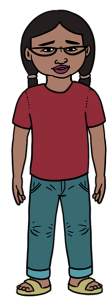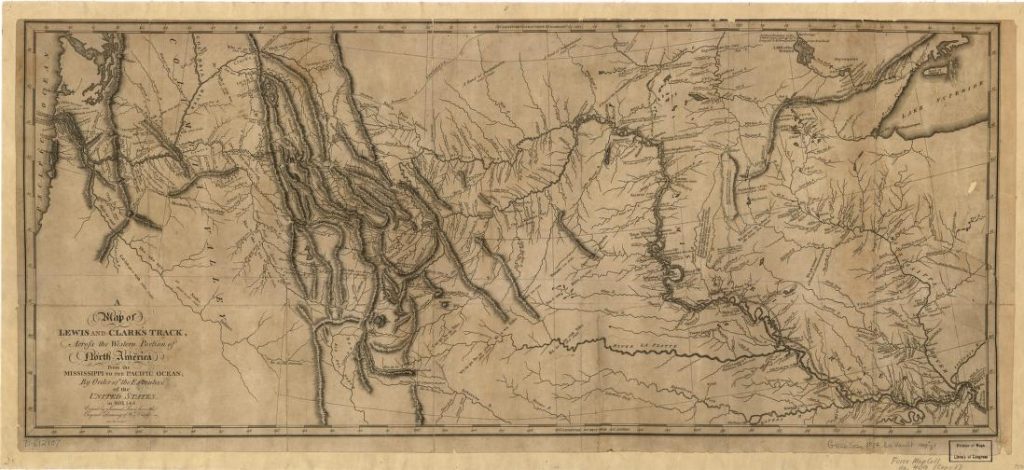How do we cover seven different topics in one game?
We’ve started co-designing our next game with teachers and the challenge has been to combine multiple interests and perspectives. Several of the teachers in this cohort are interested in the journey of Lewis and Clark. One workshop participant is very interested in agricultural science and outdoor education. Several teachers from both this cohort and the previous one believe it’s important that Indigenous people are visible in American history past the landing at Plymouth Rock. Suggestions from students have centered around traditional survival skills of Indigenous peoples. Then, of course, there are state standards that need to be addressed for social studies, mathematics, science and language arts.


How do we combine multiple perspectives?
On the one hand, there were tens of thousands of Indigenous people living in the area, including Lakota, Dakota, Mandan, Arikara, Hidatsa, Salish and Ojibwe nations, with a variety of ways of life and traditions by which they had survived for many generations. On the other hand, for the members of the expedition, they were venturing into uncharted territory. Undeniably, to travel to an area where you didn’t know what people, animals or terrain you would encounter takes significant bravery.
The Corps of Discovery members created maps and wrote scientific journals, contributing significantly in cartography, zoology and botany. The Mandan, Hidatas and Arikara were particularly notable for their knowledge of agriculture. The Lakota used their knowledge of astronomy for navigation and tracking the seasons.
There has always, everywhere been math (and science)
In discussing game design with teachers from both cohorts, my first game draft focused on math and science on the Lewis and Clark trail. Levels I’m considering (and I very much would like more feedback) include:
My thought is that the first and third levels would be from the perspective of those on the expedition, the second and fourth would be from different tribes’ perspectives and the last level, on mathematics, would have examples from the expedition, the Indigenous communities and Metís traders, who also lived along the trail.
I say first, second, etc. but my thought is that there would be an introduction to the expedition and its role in history, and then students would be presented a menu with icons that they could select in any order. It would look sort of like the one below, but would have actual images from the Library of Congress rather than just be something I pulled together with Adobe Firefly.


I really like the idea of choice where students can go on different adventures. I do not teach Lewis and Clark but I think map skills are a big standard throughout all grades so I love that you incorporated that. Would there be options in the games for students to type deep level thinking answers and teachers see them (easy fun grade and check for understanding)
Generally, within the games we have only questions that can receive immediate feedback. However, we have had teachers use lessons in Google classroom with other games where the students answer more open-ended questions. Now that you have mentioned it, there is a ‘sort of’, way for immediate feedback. For example, asking “What do you think was the reason the U.S. wanted to fund this expedition?” Then, regardless of student answer, the program could come up with ‘There is more than one perspective. Click one of these two characters to hear theirs.”
I really enjoy the set up design here. I think that it is great that you were able to include a variety of different learning experiences through different games. Students will like that there is a variety and that it isn’t the same thing over and over. Map skills are something that they will be able to carry with them forever and ever. I am currently teaching about agriculture in North Dakota, I like that you are able to tie this in with Lewis & Clark and their experiences.
Will students be able to get immediate feedback as they play?
Yes, students will get immediate feedback as they play.
I love the map and visuals for the geography part of this game! I work with students K-5 and usually, it seems, that students do not realize that the map of the US changes throughout history. I like the visuals for the population difference too. The numbers are both “big” for little kids, but with the chart – it is easier to see how different they really are.
I love the visuals, they do an excellent job of putting the information in perspective. I also love that you visually had vocabulary words on the screen when explaining them.
Suggestions to cut the video – at the 0:55-1:12 you name states that was not part of the United States – maybe don’t say all the states and just highlight them (4th graders should have learned states already).